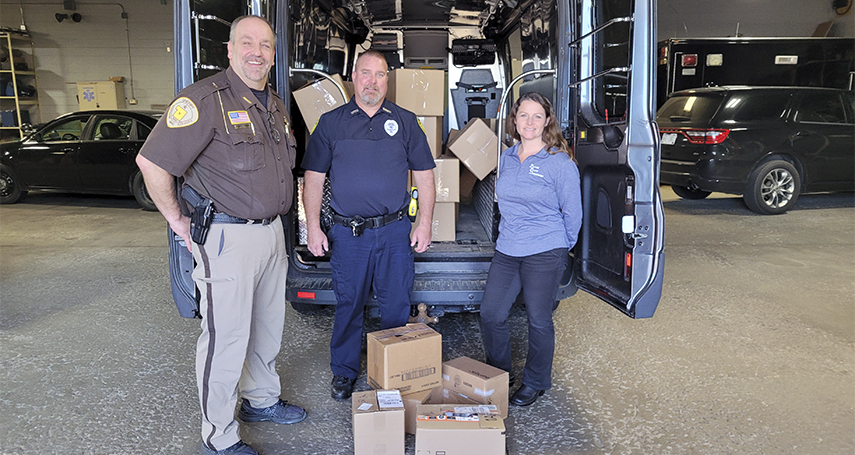From the editor: What’s the deal with the police blotter?
By Brandi Makuski
There are a few newsworthy elements that most legitimate news outlets produce regularly that aren’t actual news articles. Obituaries, weather briefs, business bullets, and the like. But the one that’s the most popular is, hands-down, the daily police blotter.
In early 2022, local law enforcement agencies switched to a new software reporting system. This always means customizations to install and bugs to work out. The three agencies (Portage Co., Stevens Point, and Plover) comprise a very large animal with dozens of more important matters to address before customizing the daily blotter it sends to the press.
After a few weeks without those daily blotters, local newsrooms began receiving them again, but they are easily three times longer than they were previously—and honestly, they’re a mess.
To give you an idea of what we’re dealing with, here’s how the blotter appeared before the change (we redacted the names to protect privacy):

And here’s how it looks now:

The blotter typically contains all the police and sheriff’s calls for service, including traffic collisions, arrests, fires, OWIs, and other incidents or alleged crimes observed by, or reported to, local law enforcement.
Early in my career, at the Stevens Point Journal, the blotter was handwritten and located in the dispatch room at the city’s police department in the basement of the downtown courthouse. In those days, we had a newsroom of five trained reporters who would thumb through the pages, copy pertinent details into our reporter notebooks, then head back to the Journal building on Third Ct. to type it up.
Reporters are trained to know what pieces of such reports they should and should not disclose to the public. Some details, such as the names of victims or minors, or victim addresses, were visible to us on the officers’ handwritten reports but were not subject to publication for the sake of decency and the safety of those involved (and now, victims’ privacy is a legal requirement under Marsy’s Law).
There was also an understanding that just because an individual had been arrested, it didn’t mean they were guilty of having committed the crime, so suspects’ names were never reported until later, and then only if they were charged in criminal court.
This is why the daily blotter reads something like, “A 23-year-old man was arrested from the 900 block of Michigan Ave. when a 19-year-old woman called police to report an assault.”
Every weekday for the past 16 years or so, this reporter (or a member of her staff) has sat before the media reports from all three local law enforcement agencies and typed up a summary of everything that happened in the previous 24 hours, or if it was a Monday, everything that occurred over the weekend.
Monday blotters are always a bit larger, but never like it is now: the Dec. 19 blotter from the sheriff’s office, for example, was a whopping 44 pages long, and the city’s blotter was 33 pages. It’s a far cry from the eight- or nine-page reports we previously received each Monday morning, and what’s sent to the press contains less than half of the information we need.
We regularly connect with local law enforcement. We routinely review initial complaint reports, many of which first present themselves in the daily blotters we receive. The documentation of arrests and property crimes is a part of what the public expects to see from any news source.
Whether it’s a house-egging, a stabbing in a residential neighborhood, or a bar fight in downtown Stevens Point, we believe the community should be apprised immediately. Unfortunately, the format of the new reporting system keeps a lot of this information from the press, and by extension, the community that both law enforcement officers and news reporters serve.


